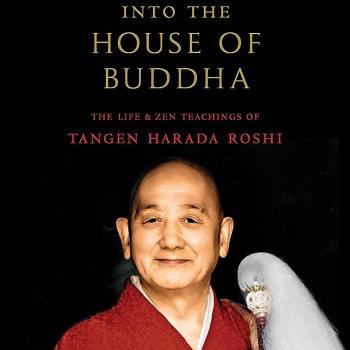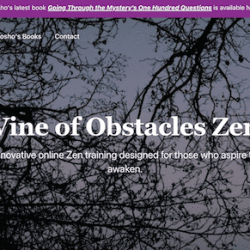A full weekend with a family reunion – the Polish side of the family – and a day at my brother’s cabin. In-between I’ve been nibbling on Jeffrey Hopkin’s Emptiness in the Mind-Only School of Buddhism.
It has a lot to say, and oh those Tibetan Buddhists can say it so! clearly, about the Genjokoan passage that we’re working with in the Dogen Study Group.
…When we conceive our body and mind in a confused way and grasp all things with discriminating mind, we mistakenly think that the self-nature of our own mind is permanent. When we intimately practice and return right here, it is clear that all things have no self.
A couple question might come up here. First, why is it that we’re confused and cling to confusion when practicing intimately is so sweet? Second, specifically how is the discrimination mind mistaken?
Here’s a longish piece from Hopkin’s work that addresses the second question with the three natures: imputational, other-power, and thoroughly established. You might have to take a deep breath and read this a couple three times or so.
The Sutra of Unravelling the Thought attributes this process in the past as creating and reinforcing misperception. That’s one way to address the first question.
Here it is (p. 26-27):
In Buddhism in general, suffering is viewed as being induced by actions motivated by afflictive emotions, which in turn, are grounded in misperception of the nature of phenomena. More specifically, the Sutra of Unraveling the Thought … frames this process as stemming from the superimposition of a false status – called and imputational nature – on impermanent phenomena.
These phenomena are called “other-powered natures because they are objects under the influence of something other than themselves – that is, under the influence of causes and conditions. Other-powered natures do not have the power to stay for a second moment. No matter what they are – bodies, minds, tables, chairs, houses – most beings see them falsely, as if they were solid and could remain, as if they were under their own power, whereas actually they cannot remain even for a second moment since they are under the influence of the force of causes and conditions outside themselves.
More specifically, those causes and conditions are predispositions, internal seeds, etchings on the mind by former perceptions that, when activated, produce an appearance of an object and a consciousness for pays attention to it. The same seed causes the appearance of the object and the appearance of the subject, much as in a dream. …Contrary to such superimpositions, the final mode of being of other-powered natures, their emptiness of these imputational natures, is called the “thoroughly established natures.” The distinguishing feature of a thoroughly established nature is that it is a final object of observation by a path of purification. It must be something cognizance of which will remove obstructions built on unfounded misperceptions with respect to phenomena.
Although dense, this clearly points to the study of the self that is the Buddha Way. We’ll work through this during the class on Monday night and I may have more for you Tuesday.











